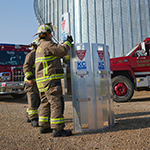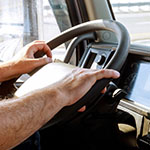Drug and Alcohol testing of drivers
Driving is dangerous and being under the influence of drugs or alcohol can affect a driver’s judgement and ability to recognize hazards and respond appropriately. Substance abuse is a significant problem in the United States and research points to it being a significant factor in auto accidents and fatalities.
Here are some facts to consider when developing a drug testing program for your drivers:
- Current estimates from the Substance Abuse and Mental Health Administration indicate that 15.4% of all adult Americans struggle with a substance use disorder each year.
- In 2021, 4.6% of workplace drug tests were positive, up 30% since a low in 20121.
- Each year traffic accidents are either the second or third leading cause of accidental deaths in the US, with around 40,000 fatalities2.
- Approximately 30% of fatal vehicle accidents involve an alcohol impaired driver.
- From 2019 to 2022 the traffic fatality rate grew 17%, the largest increase in over 30 years3! The National Highway Traffic Safety Administration (NHTSA) attributes the jump to an increase in speeding, distracted driving, drug and alcohol impairment and a decline in seat-belt use.
- Most nuclear lawsuit verdicts, verdicts over $10 million, are auto related4. Organizations often have difficulty defending themselves when their driver tests positive for drugs or alcohol after an accident.
CDL Drivers
Drivers of vehicles requiring a Commercial Driver’s License (CDL) are subject to USDOT-mandated pre-employment, random, post-accident and reasonable suspicion drug and alcohol testing requirements. The USDOT has also clarified that marijuana is a Schedule 1 drug that must be tested for, regardless of the legal status of marijuana in the driver’s home state. There are no exemptions for medically prescribed marijuana.
- A CDL driver who tests positive on a DOT test or refuses to take a DOT test, must successfully complete the return-to-duty (RTD) process with a DOT qualified substance abuse professional (SAP). The requirements for the RTD process are found in 49 CFR Part 40, Subpart O. See 49 CFR 382.501, 382.503
Non-CDL Drivers
There are no regulations or laws requiring testing of non-CDL drivers. As a best practice, for employee safety and to protect your business from significant liability, all employees driving on behalf of an organization should be subject to a drug and alcohol testing program. This includes those driving organization-owned or personally owned vehicles. The program should be like DOT testing, with pre-employment, random, post-accident, and reasonable suspicion. The USDOT requires that drivers pulled for random tests only be pulled from a pool of CDL drivers. So non-CDL drivers should be placed in a separate pool for random selection.
Consequences of a positive test
The USDOT’s Drug and Alcohol Clearinghouse5 regulations require employers to input positive CDL test results into a database and for prospective employers to check the database prior to hiring an applicant.
- There were 158,330 CDL holders in the Clearinghouse (January 2024) that were in prohibited status, meaning they tested positive but did not complete the process to become qualified to drive again.
- 120,676 had not even started the process to become qualified.
- Some “prohibited” drivers have taken non-driving positions, but others have moved into driving positions not requiring a CDL, with organizations that do not test drivers.
[1] Workforce Drug Test Positivity Climbs to Highest Level in Two Decades, Finds Quest Diagnostics Drug Testing Index Analysis
[2] Center for Disease Control, Leading Causes of Death Visualization Tool
[3] Early Estimate of Motor Vehicle Traffic Fatalities for the First 9 Months (January–September) of 2022, Traffic Safety Facts, DOT HS 813 406, December 2022
[4] Understanding the Impact of Nuclear Verdicts on the Trucking Industry, American Transportation Research Institute, June 2020
[5] U.S. DOT Drug and Alcohol Clearinghouse, December 2023 Report

 >
>

 >
>
 >
>